Health Benefits and Toxicity of the Element Tin and its Effect on Adrenals, Depression and Fatigue
| Cellular Nutrition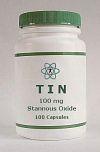
While Tin (Sn) has been established to be an essential trace element for some animals (they won't grow well without it), some researchers are still unsure of whether tin is essential in human health and nutrition. Daily dietary intake of tin from various food sources is in the 1-3 mg range, which is less than 1/10th of the daily intake obtained years ago before lacquering tin cans, switching to aluminum cans, or in the more distant past, when tin cups or tin pans were still in use. Since bronze contains copper and tin, the use of tin has been established well past the Bronze Age, several thousand years ago.
Rat studies have shown that tin-deficient diets resulted in poor growth, reduced feeding efficiency, hearing loss, and bilateral (male pattern) hair loss. Tipton and Shafer examined tin in human tissue after accidental deaths. They noted that tin was found in the aorta, heart, kidney, liver, muscle, ovary, spleen, pancreas, brain, testes, stomach, and uterus, but none was found in the thyroid of any victim, while the prostate, which usually shows no other trace element, had tin.
Average concentrations were the same range as cobalt, chromium, iodine, and selenium, which are known vital nutrients. Inorganic tin is capable of entering into biological activity at saline pH, and it is far less toxic than other known vital trace elements such as copper and cobalt. In addition, tin levels do not vary statistically with gender, age, or geographical areas. Misk found traces of tin in the fetal heart and spleen, and higher levels in the liver, while Schroeder and others reported no tin in stillborns.
Tin is associated with Iodine the same way as calcium is associated with magnesium (see "Tin & Iodine" for details). Tin supports the adrenal glands, and iodine supports the thyroid gland, with both subsequently affecting cardiac output: Tin + adrenals control the left side, and iodine + thyroid control the right side. In addition to low Vitamin C and/or Vitamin B1, low tin is a common nutritional cause of low adrenals, which can lead to left-sided cardiac insufficiency. While fatigue or depression may be experienced with cardiac insufficiency of either side, breathing difficulties or asthma are more common with left-sided cardiac insufficiency, and swelling of hands and feet is more common with right-sided cardiac insufficiency, regardless of the cause.
Dr. Ronald Roth had 285 individuals taking part in the Nutritional evaluation of Tin, some on a short-term basis (3 weeks), and others on a long-term basis (1 - 2+ years), resulting in some valuable feedback on various responses encountered, including side effects, although the rather poor absorption of stannous oxide was a limiting factor in being able to achieve optimal cellular levels of tin in all subjects.
Of the changes experienced after supplementing tin, negative reactions, e.g. stomach / digestive upsets, or skin reactions, were at par or less compared to the best tolerated trace minerals such as chromium, calcium, or magnesium. Positive health effects were numerous and included improvements with fatigue, some forms of depression, and a general increase in energy, well-being, and mood. There were also benefits with certain types of headaches, insomnia, asthma, or improvements with digestion, skin, or various aches and pains.
Tin toxicity [1] - or its health hazards - documented over the last 200 years in humans has been linked to the consumption of foods or beverages that were stored in tinned, unlacquered containers under long-term, low pH conditions, and where levels of several hundred to several thousand mg/kg were ingested. Symptoms were limited to mostly gastrointestinal complaints such as nausea, abdominal pain and vomiting, with excess tin being rapidly excreted, and no long-term negative health or toxic effects reported.
There are many causes of depression, some resulting from abnormal brain chemistry, while others are associated with low blood pressure, low thyroid, or low (or high) levels of various essential nutrients such as lithium, calcium, magnesium, copper, sodium, protein, Vitamin B1, B6, B12, manganese (low blood sugar), and others. Many of these nutrients are well documented in affecting mood, but Dr. Ronald Roth had not previously come across any reference to tin until starting to do research on it, and after it helped some patients with depression where any other drug, nutrient, or intervention had failed.
Tin is not a panacea for depression --- it will not work when other chemical imbalances are involved, but it can be the missing link when most other attempts to resolve depression have failed; essentially involving low, or malfunctioning adrenals. For the same reason, some cases of asthma - particularly when related to low adrenals and subsequent left-sided cardiac insufficiency - respond to tin as well.
Tin (as stannous fluoride) is found in some toothpastes, and it has been used in the form of stannous chloride as a chemical preservative. It is also added to asparagus to improve its taste, while in some countries it has been utilized as a remedy for intestinal parasites. Herbal Sources of tin (in the highest to lowest order) include doggrass, juniper, bilberry, milk thistle, dulse, lady slipper, althea, valerian, Irish moss, nettle, barberry, yarrow, blessed thistle, red clover, yellow dock, kelp, licorice, devils claw, pennyroyal, and senna.

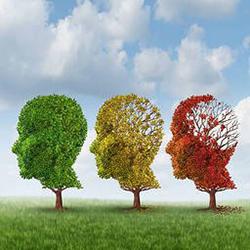 Manganese may help with some symptoms of Parkinson's disease such as muscle rigidity and twitching...
Manganese may help with some symptoms of Parkinson's disease such as muscle rigidity and twitching...
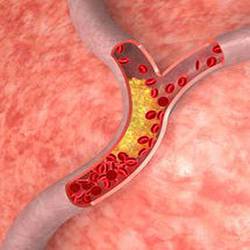 Research shows that phytosterols such as beta-sitosterol may help normalize the function of natural killer cells and T-helper lymphocytes...
Research shows that phytosterols such as beta-sitosterol may help normalize the function of natural killer cells and T-helper lymphocytes...
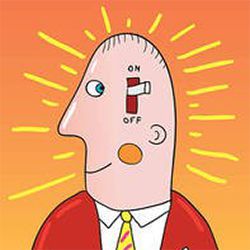 Iron deficiency may be suspect with some forms of ADHD. 84% of children with ADHD were found to have abnormally low levels of ferritin...
Iron deficiency may be suspect with some forms of ADHD. 84% of children with ADHD were found to have abnormally low levels of ferritin...
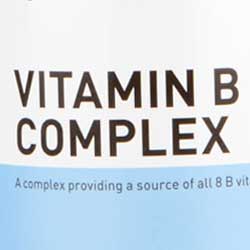 A high intake of B Vitamins can trigger heart palpitations, HBP, major complications in patients with congestive heart disease...
A high intake of B Vitamins can trigger heart palpitations, HBP, major complications in patients with congestive heart disease...